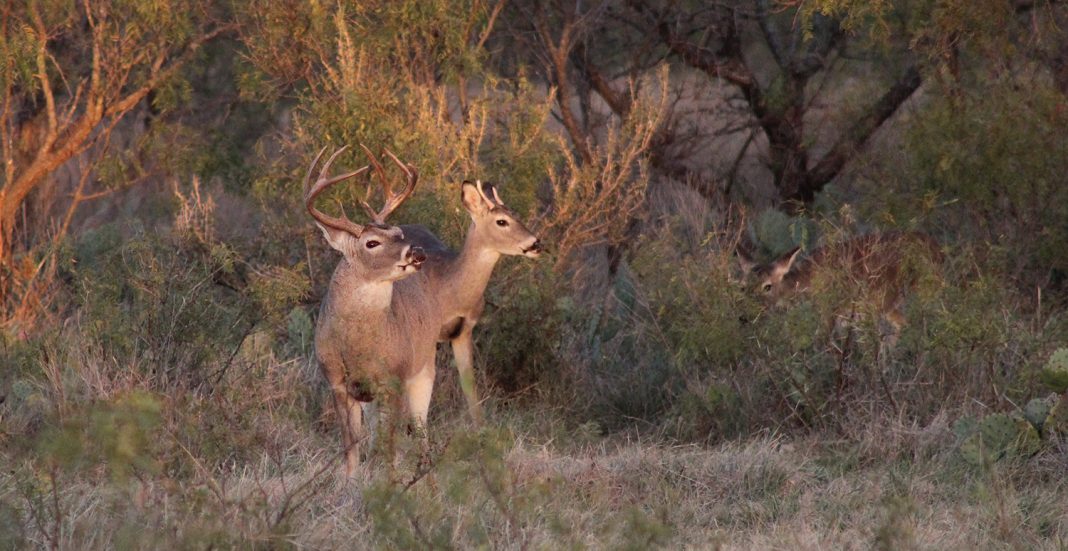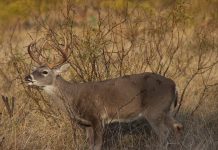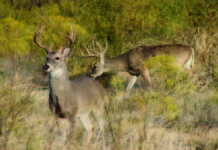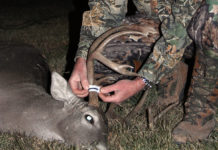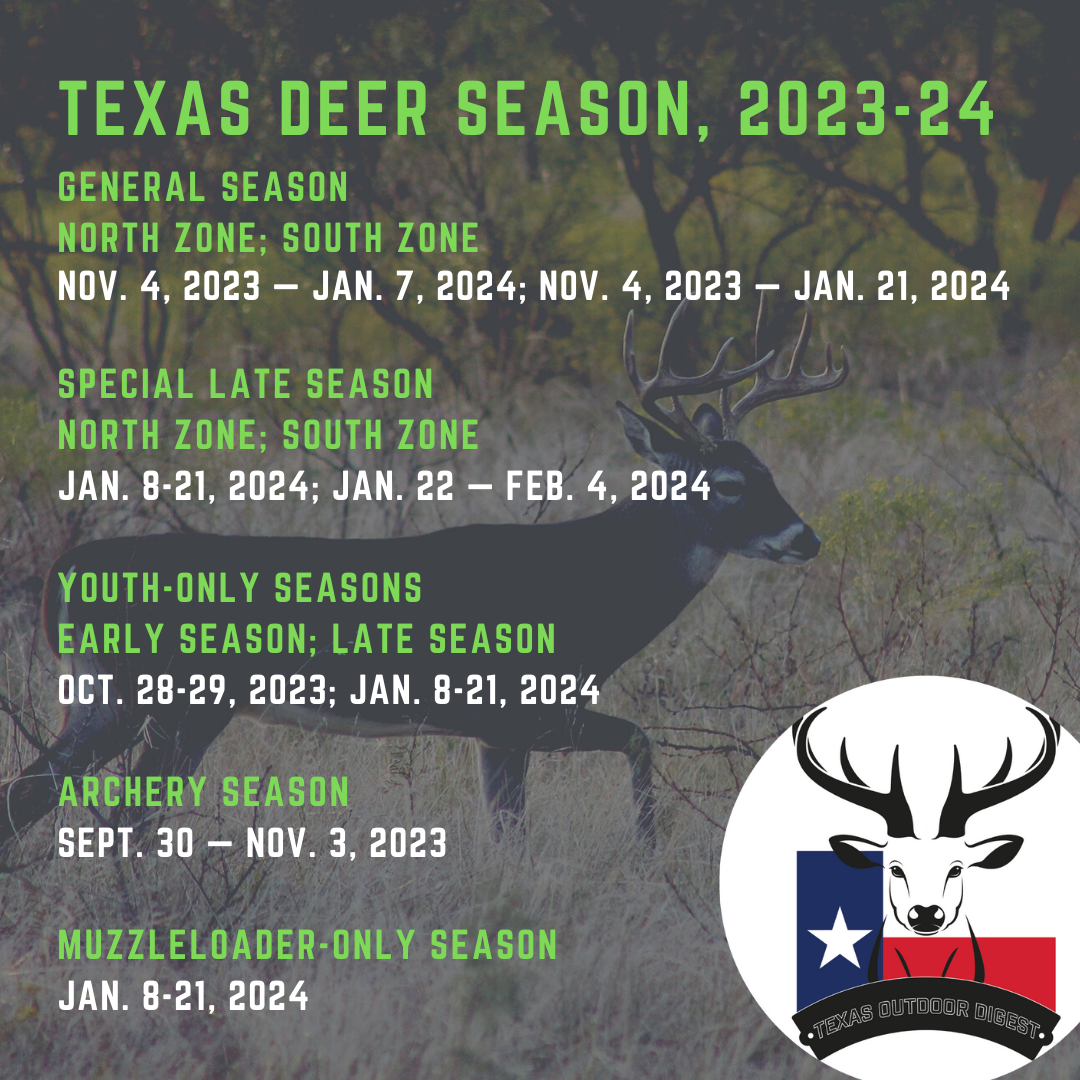
The dusty breeze tickled the tops of spindly mesquites and thick bunch grass as I descended the steps of the tower stand.
At the bottom, the icy chill of the late November morning hit me square in the face as binoculars were raised for what seemed like the 100th time.
The massive nontypical buck was laying down.
Better yet, it was facing away.
Best of all, it was upwind.
Rarely does stalking deer of any kind end with any type of decent attempt at a shot. However, after sitting for four hours after sunrise and spying one of the largest deer I’d ever seen bed down in the middle of an expansive prickly pear flat and stay for more than an hour, I decided to press my luck.
I cautiously exited the stand with just a rifle and my optics, and to my utter amazement, the deer never even moved, much less busted me, so I commenced a slow approach, attempting to stay as low to the knee-high grass as possible and using what little cover the scattering of mesquites could provide.
Every 50 yards or so, I would stop and check the situation, and every time the buck’s gnarled chocolate rack was in the same position.
It was simply astounding, and all the scenarios I’d ever heard about picking your spots to stalk up on a deer seemed to be lining up perfectly.
Of course, nature has its own way of shooting down your opportunities.
Because the buck was bedded down amid the vegetation and all I could see was its head, getting a clean shot off proved difficult, which meant getting as close as possible. As I slowly got a decent rest on a fluttering mesquite about 75 yards away from the buck, I popped my head up and took one last glance through my binoculars.
The other set of eyeballs that I hadn’t accounted for and didn’t know were there got all the scrutiny they needed with my movement, and the doe that was obscured by the buck’s head and grass sounded the alarm, and a pair of white flags scampered away. I could have taken an offhand running shot, but all I could do was remove my stocking cap and scratch my head.
The reason the buck acted so strangely, and the reason why the doe was there can be summed in two words: the rut.
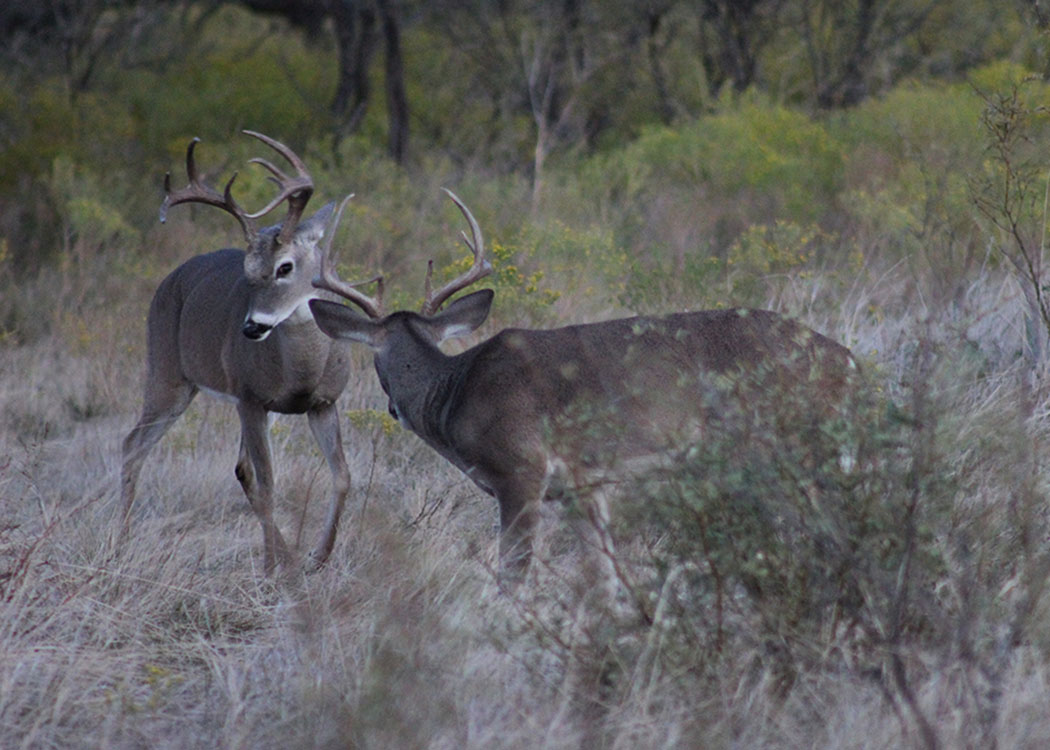
Banking on the rut in Texas deer hunting
The whitetail breeding season in our state falls anywhere from early fall to later in the winter depending on where you’re at, and hunters looking to get a shot at the largest bucks they’ll find all year should plan to target days when bucks are actively chasing does and are more susceptible to being seen.
Any veteran hunter will tell you that big deer can be like ghosts. You simply won’t see them until the rut comes along, which is why you can stack the deck in your favor by examining trends and timing your hunt to coincide with peak breeding activity.
A multi-year statewide study conducted by Texas Parks and Wildlife Department biologists shows some interesting data regarding the peak of the whitetail breeding season. In the Rolling Plains, the majority of does were bred from Oct. 8 to Dec. 30, and study areas showed a peak date of Dec. 3 in northern stretches of the region and a peak of Nov. 20 in the south.
By comparison, the big buck landscape of South Texas had the latest rut with breeding dates ranging from Nov. 9 to Feb. 1, and the peak dates for the eastern and western portions of the region both were well past the middle of December.
The Edwards Plateau, the area of the state with the highest whitetail and hunter densities showed conception dates ranging from as early as Oct. 9 to as late as Jan. 30.The peak dates show just how geography affects breeding cycles with the eastern portion of the region seeing a peak of Nov. 7, the central portion a peak of Nov. 24 and the western portion a peak of Dec. 5.
The parameters of the study also showed how the rut can alter deer behavior, especially as bucks seek out receptive does, something that can change over time. Young does and those in poor physical condition may not breed until later in the fall and into the winter, according to the study, and in fact, a doe may only appear suitable to a buck for a short window of as much as five days or fewer. However, that doe may be willing to breed only for a period of a day or less, something that could force her to come into heat again roughly a month later if breeding isn’t successful.
While hunters can bank on science and biology in terms of looking at the best times to hunt, some of the best tactics are gleaned from simply knowing what makes a big, old whitetail buck tick. A mature whitetail is a whole different animal, especially compared with younger deer. While younger bucks get worn down quickly during the rut, older deer simply have more stamina when seeking out mates, which means they may forego food and water for long periods of time. Later in the rut, that means the bucks that are more active likely will have larger headgear, and will range across a much larger area than they typically would during other times of the year.
While patterning a deer using game cameras and lots of time in the field has become a common trend statewide, it doesn’t always mean you’ll have success, especially considering that mature bucks can readily leave their main haunts to strike out in search of receptive does. That could mean the buck you’ve seen in the same draws or senderos at one particular ranch could vanish for days. That scenario also means that other big bucks you may never have had the opportunity to observe could simply appear out of thin air, especially if you’re hunting near forage sources that are holding lots of does.
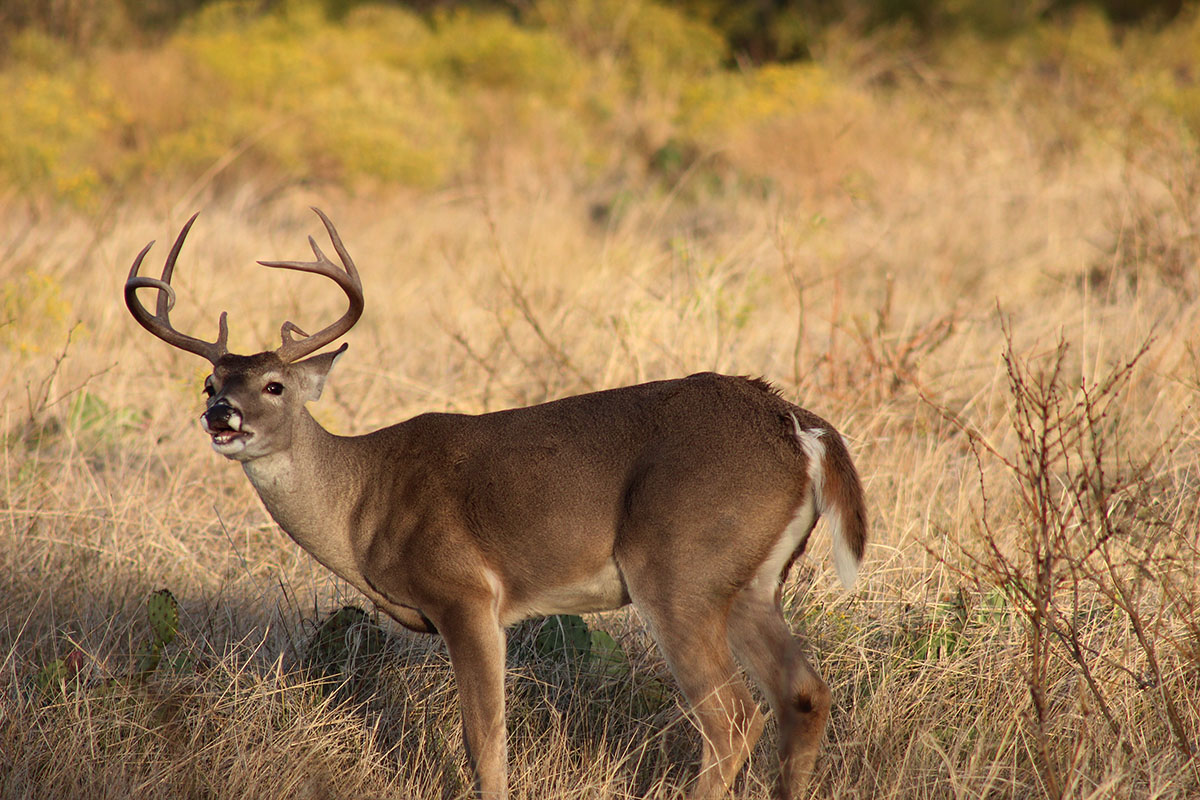
Prime time for rattling in Texas deer hunting
The TPWD rut study highlights the peak times, but having boots on the ground is the real way to tell if the rut is in high gear in a particular region. In some instances, the rutting activity window could be diminished for any number of reasons. I’ve hunted white-tailed deer from the top of Texas to the bottom, and while they are the same species from the Red River to the Rio Grande, animals in different regions can react differently to a variety of factors such as range conditions and weather.
However, one certainty in deer hunting – no matter where you’re pursuing big bucks – is the sheer fact that they’re competitive by nature. During the rut, bucks are exponentially more aggressive toward does and male rivals, which means that the period is tailor-made to breaking out the rattling horns and starting up the most robust deer fight you can imagine.
Rattling, long a staple to entice big whitetails within range in the brush country of South Texas, also is among the most practical ways to bring in bucks in other hot spots. At its core, rattling is a simple concept: crack together a pair of sheds or synthetic antlers and bring in inquisitive deer or ones looking for a fight. However, like any other practice, there are multiple variations and techniques that can be included.
You can add buck lures and scents to nearby vegetation. You can add the noise of a grunt call and scrape your antlers against surrounding mesquites. You can even tote along a decoy – either a buck or doe imitation, it doesn’t always matter which – to tempt a wily, old whitetail into showing himself. There are even rattling bags and other contraptions on the market these days which simplify the process of creating the sounds of clashing antlers without any threat of poking yourself.
The long and short of rattling is this: tailor your approach to the setting that you’re hunting and go from there. You’ll find that there are multiple avenues for success.
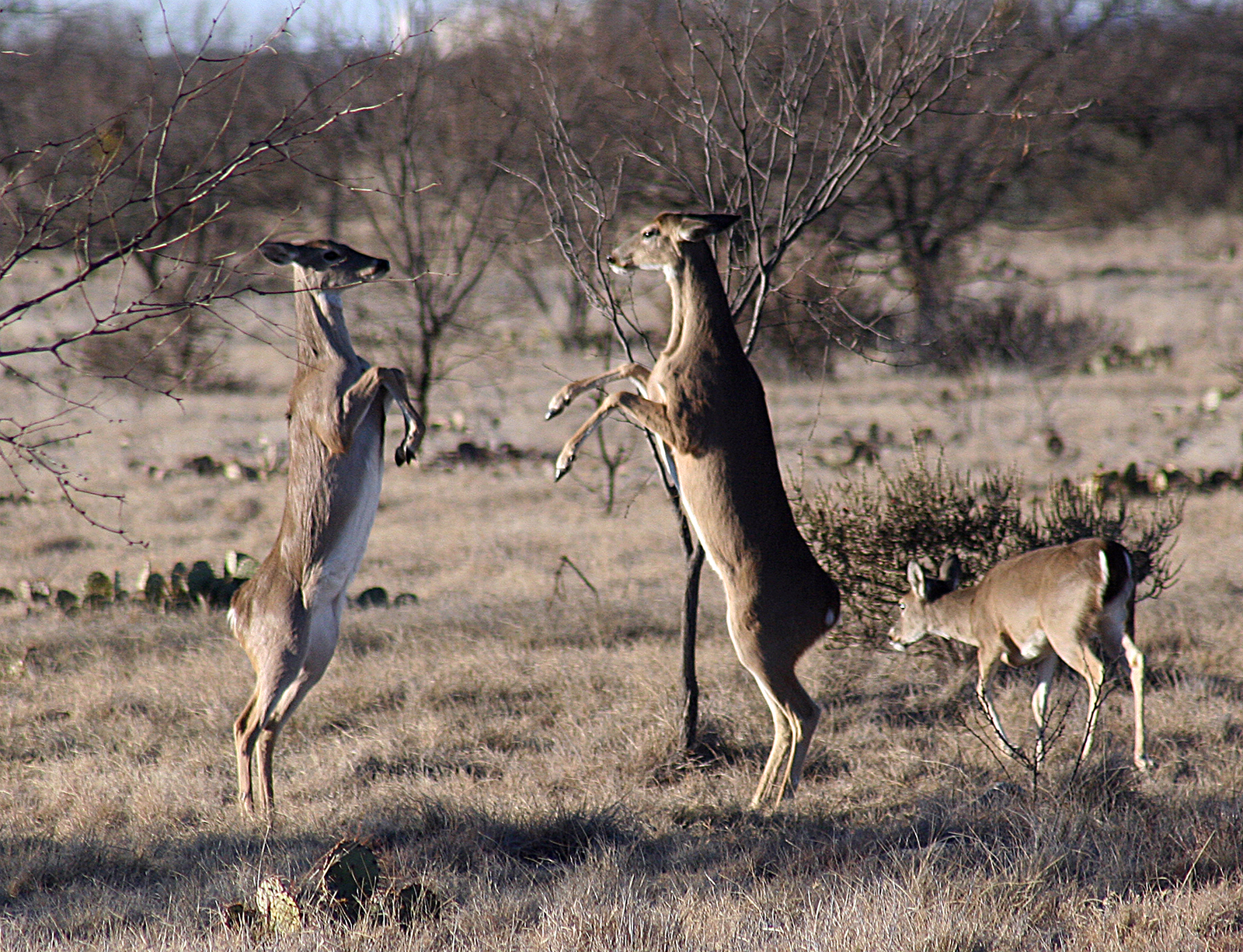
If there’s one thing that is nearly a guarantee in rattling, it’s that mature bucks will come into your sounds downwind, so you should plan and set up accordingly, especially if you’re going solo and may only get one quick shot at a bruiser buck that slips in. The two-person play – with one hunter acting as rattler and the other as shooter – is always the best bet in rattling, but that, too, is no guarantee a wily, old buck won’t get the best of you.
Circling back to deer biology is key in understanding how and why rattling works, and why it’s akin to spring turkey hunting in many regards. During the early part of the hunting season, mature bucks, as with mature gobblers, aren’t as overly dominant and trying to pique their interest with boisterous calling – whatever the method – often won’t have consistent success. You more than likely will find curious younger critters coming in to your imitations, but the work you’re putting in won’t spur the animals you’re hoping to attract.
However, as the season progresses, imitating the game you’re after quickly becomes the trick to filling your tags. The peak of the rut, much like the apex of spring turkey hunting, is the time to go all-out with your calling tactics. It’s also important to exercise patience when pursuing big deer, especially if you’re after a particular one you’ve seen.
They don’t get big simply because they’re lucky, but you can swing the odds somewhat in your favor by focusing your efforts. Putting in longer hours in the field is among the best ways to scout and find the best areas to set up. This is where finding large scrapes and other signs of dominant buck activity are crucial, in addition to those areas that act as natural funnels for deer movement.
Hunting longer also can pay off, and during the rut almost anything can happen. Dawn and dusk, and the time shortly before and after, typically are the most fruitful times to spot lots of deer in Texas’ known hot spots. I’ve also spent longer days in the field during the rut and seen mature bucks on the move around lunch time in the heat of 70-degree days, seeking out does ready to breed. Any other time of year those bucks would never show themselves, much less during the middle of a heat wave, but the rut simply makes deer act differently.
Another important aspect to consider in rattling is the stages of the rut. The pre-rut and peak of the rut itself obviously are great times to do some rattling, but you also shouldn’t sleep on the post-rut, which can be extremely late in some locales. Not all does will be bred earlier in the fall, which means there could be mature bucks still on the prowl well into December or even later. The competition will still be high, if not higher, since there won’t be as many does in heat readily available. This is undoubtedly the best time of year to hit the horns together in hopes of luring in what more than likely will be a mature buck.
Rattling is alive and well across Texas, and with some hard work, and perhaps even a bit of luck, the tactic may pay off with the biggest buck you’ve even seen hustling to the horns. Just make sure you don’t catch a case of buck fever when you’re looking down the barrel!
2023-24 Texas Deer Seasons
General Season
North Zone; South Zone
Nov. 4, 2023 — Jan. 7, 2024; Nov. 4, 2023 — Jan. 21, 2024
Special Late Season
North Zone; South Zone
Jan. 8-21, 2024; Jan. 22 — Feb. 4, 2024
Youth-Only Seasons
Early Season; Late Season
Oct. 28-29, 2023; Jan. 8-21, 2024
Archery Season
Sept. 30 — Nov. 3, 2023
Muzzleloader-Only Season
Jan. 8-21, 2024
Tracking of wounded game the responsibility of ethical Texas hunters

















